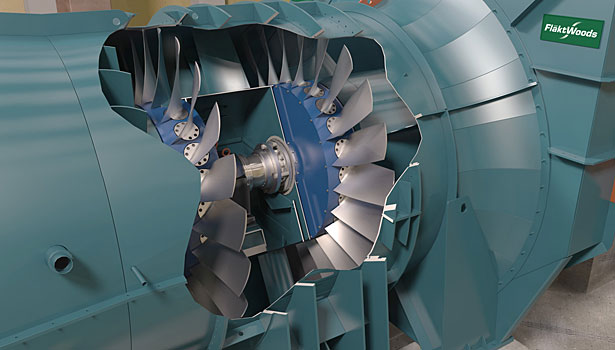Swiss Manufacturer a Big Fan of Document Management Sofware

Switzerland-based Fläkt Woods ranks second worldwide in fan production for cement plants, subways and tunnels. This fan is for the Marmaray tunnel project in Turkey. Photo courtesy Fläkt Woods Group

Fläkt Woods is a leading producer of ventilation systems for infrastructure and industrial facilities. Photo courtesy Fläkt Woods Group


Fläkt Woods knows its fans—industrial fans, that is. The company is one of the leading manufacturers of air-handling units and air-terminal devices for nonresidential buildings. It ranks second worldwide in fan production for tunnels, subways and cement plants. Plus, it is a leading producer of ventilation systems for infrastructure and industrial facilities.
The company operates 15 plants in seven countries. It also has many sales offices worldwide, employing more than 3,500 people in the United States and 29 other European and Asian countries.
Because of its size, the company generates a huge number of Word, Excel and PDF documents related to manufacturing and production. These include CAD drawings, quality control documents, product reports, customer invoices and other documents that contain important business information.
Five years ago, Fläkt Woods installed document-management software (DMS) at its headquarters in Geneva, Switzerland, to help the design department better manage its documents. The company selected DMS software from M-Files Inc.
“We were employing a standard, ad-hoc folder-based system, [but it] was inefficient and error-prone,” explains Jouni Akras, information manager for Fläkt Woods. “For example, important design documents were sometimes accidentally placed into the wrong folder. Or, the same file was saved in multiple places, such as a server and workstation.”
To prevent these problems, DMS replaces file-path trees (common in Windows Explorer) with metadata fields. Along with date and author information, metadata becomes the file’s identification. Each file is stored in one repository or vault.
To locate a file, users simply enter keywords that define or categorize the document. There is no need for the person to know the file’s exact location or click through folder structures.
In addition, the software offers check-in and check-out features that treat a collaborative document like a library book. Only one user at a time can modify the file—be it a 3D model or Excel spreadsheet—and this prevents one user from overwriting another user’s edits.
Akras says the software enables workers to instantly see the status of a particular document, all changes that have been made, as well as all interactions with customers and suppliers. Staff members also can access all documents related to a specific project by entering the project number. They immediately learn which documents have been finalized and which are still in progress.
Impressed with how DMS helped the design department, in 2010 the company installed the software at its Global Infrastructure and Industry (GII) facility in Växjö, Sweden. Workers there use the software to ensure proper handling of ISO documents, project reports, and supplier invoices and reports.
Akras says the software has reduced design errors (and related product-quality claims) due to outdated versions of documents. This, in turn, has improved manufacturing and production processes, enhanced internal collaboration and increased organizational efficiency. Fläkt Woods also connects the document vault to its main databases to improve customer and supplier collaboration.
“Our project managers [can] efficiently handle the vast amount of
technical and quality related documentation associated with large commercial projects,” notes Fredrik Albertson, general manager at Fläkt Woods’ GII facility. “Using [DMS] to automate processes and implement strict workflow procedures on critical documents has resulted in high-quality products and improved profitability.”
For more information on document-management software, call 972-516-4210 or visit www.m-files.com.
Looking for a reprint of this article?
From high-res PDFs to custom plaques, order your copy today!








